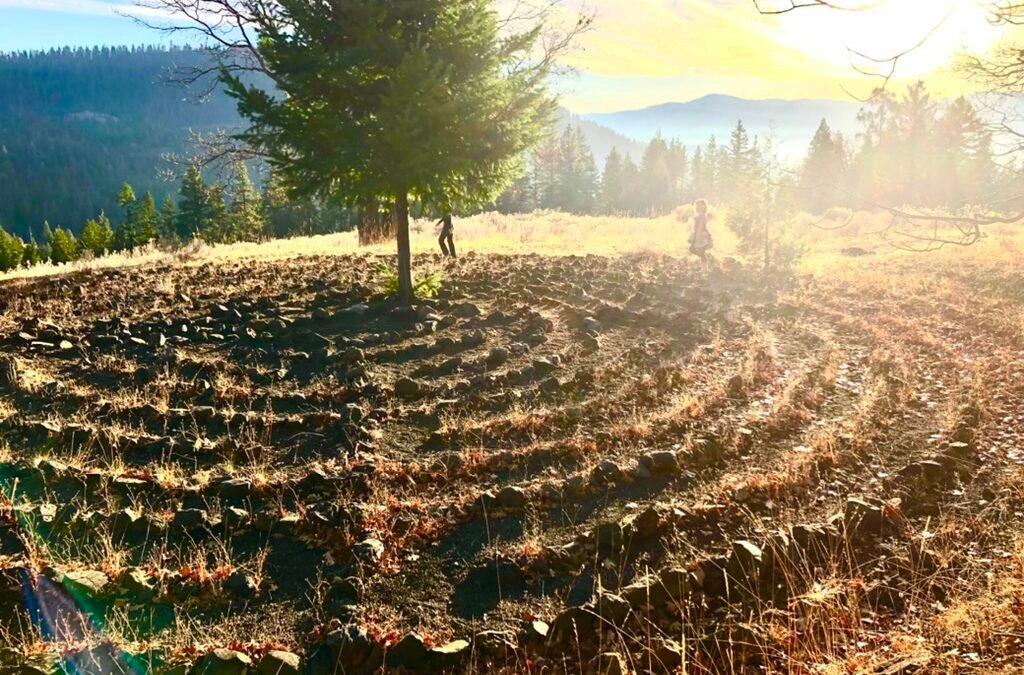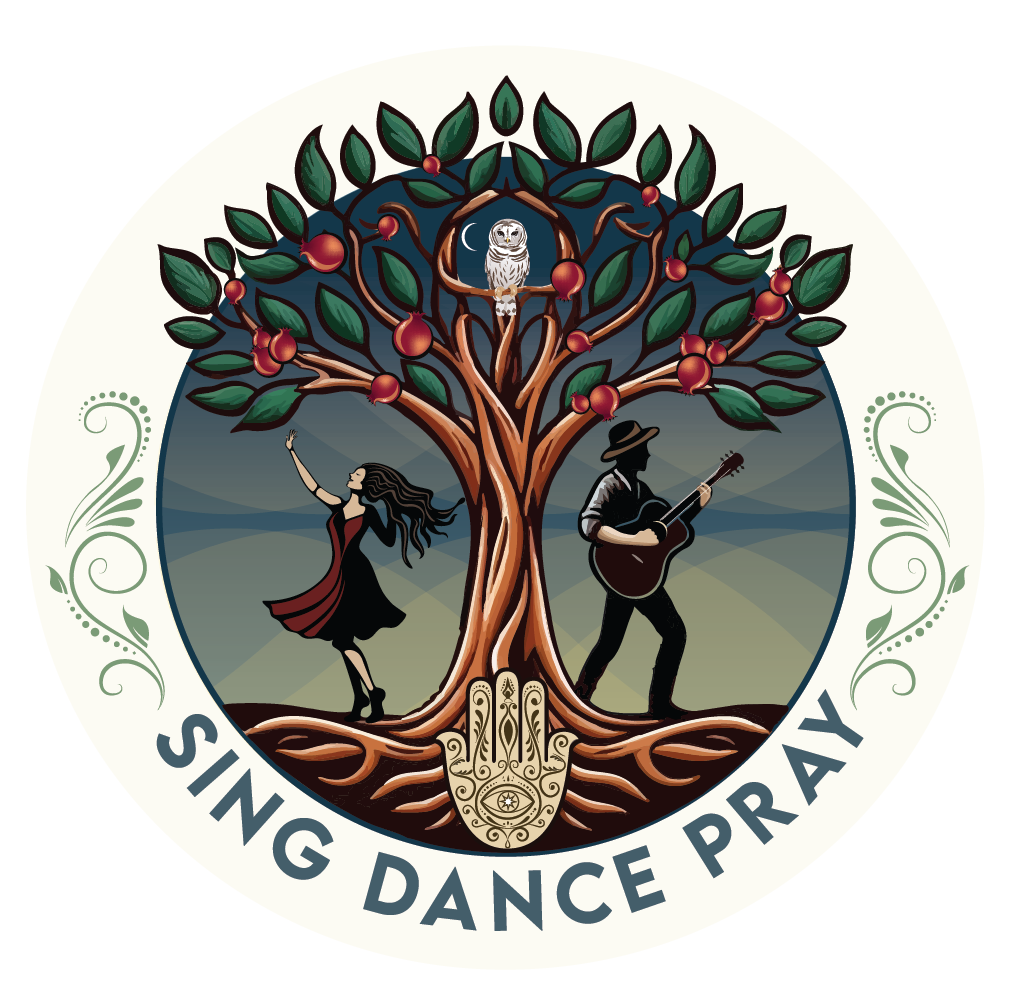A few years ago, I read a teaching about joy by Rabbi Nachman of Bratslav, that I couldn’t get out of my head for days. Like a song on repeat in your mind that you don’t really know the lyrics too, I tried to tease out an understanding of his idea.
He more or less says,
Sometimes a person sinks so far into sadness they pull away from the community. They can’t—or won’t—engage. Maybe they sit in the corner, unable to enter the dance of life. And those nearby—friends, loved ones, community—want to help them, so maybe one day some friends begin a circle dance, and the dancing is lively, and the caring community tries to pull them into the dance. At first, they resist. They might be exhausted or they might prefer their pain. But eventually, slowly, and maybe only because their friends are relentless in their love, they say yes. They let themselves be drawn back in. Step by step, breath by breath, the dance returns to them.
We know this feeling, right? The way music, movement, and friendship can rescue us from ourselves? And when it works—when joy pierces through the fog of our griefs,the relief that appears feels like a gift from Goddexx.
But then… Reb Nachman throws a curveball. He says: As soon as you become aware that you’re back in joy—run. Run straight back to your forgotten grief. Pursue it. Find it. Bring it up. Hold it in your awareness. And then? Surround it with your joy.
Wait? Go back and get the grief? Way to rain on the circle dance, Reb.
And yet. Look at that prescription. That is spiritual alchemy.
It’s saying: Don’t waste the joy.
Don’t just ride it.
Use it. Wrap it around the pain you thought you couldn’t face.
It made me wonder—was joy harder to come by in Reb Nachman’s time? Is that why you had to make the most of it? Squeeze all the value out of it? Or is joy just the most timeless and exquisite medicine for the human spirit?
A somatic teacher recently told me: it takes four seconds for a negative experience to imprint as a long-term memory.
And it takes Fourteen seconds for a positive one.
Four seconds of shame, fear, heartbreak—etched ever so quickly into the mycelia of our nervous systems.. But to hold on to the yummy stuff? The beauty, the laughter, the sparkle in your beloved’s eyes, the experience of holding your child. You have to choose it. Stay with it. Breathe into it. Let it wash over you long enough to weave itself into your being.
Fourteen seconds. That’s a lifetime in this quick-click culture.
So maybe this is what Reb Nachman meant—bring your grief into the joy-field. Let it meet the light. Hold both. That’s what real transformation asks of us.
There is a tension of opposites so often highlighted by Jewish ritual.
We don’t erase one truth to make room for another—we hold both. We sanctify the space in between.
- We break a glass at the height of joy, at the exact moment of wedding consecration.
- We eat bitter maror with sweet charoset—grief and liberation in one bite.
- In our liturgy we refer to the Divine Creatrixx with the description: Who forms light, creates darkness, who makes peace, and creates all that is. We honor the complexity and infinite mixtures of all qualities as Divine.
- We live in the helix/braid of the Tree of Life, with its right and left pillars—Chesed and Gevurah—held in balance by the middle pillar of Tiferet.
We perform mitzvot not to “be good,” but to unify the Holy One with the Shechinah, to be an agent of connecting transcendent and earthly forces in creative collaboration.
There are examples of this practice of holding the tension of opposites in the wisdom texts and storytelling of many traditions.
And this is because life’s nature is such. We all have examples of a golden moment going hilariously or even tragically off the rails.
Here’s one of mine.
Seeing Hamilton in NYC with my sweetie in 2016 was one of the highest spiritual experiences of my life. Transcendence. Tears. Inspiration flowing like fire through my whole being.
After travelling across the country for a family visit we’d left our four-year-old with his grandparents in Rockland County and driven into the city. It was a rare night—just us.
At the conclusion of the show, we floated out of that theater bright eyed, breathing in poetry and purpose and light. We quickly walked the five blocks to our car and happily sank into the comfortable seats.
And then… like a New York slap in the face.
Our rental car wouldn’t start. The sky was almost dark and streetlights were coming on.
Trump was in town, so half of Manhattan was shut down.
We’d promised our kid we’d be home for bedtime.
I had 10 minutes to get to the closest rental office before they closed. Eight blocks. Full sprint.
Stefan stayed with the dead car and waited another hour for the tow truck driver who took him a lengthy and circuitous route back to La Guardia airport.
Meanwhile I rushed through the paperwork at the Alamo office to rent a new one.
(I had literally said the day before: “I’m so glad I’ll never have to drive in Manhattan.” Ha)
Then ultimately, there I was behind the wheel, where girded by joy, I met my fear.
Called forth by my courageous maternal heart, I drove through the Lincoln tunnel. Flying high on Hamilton, adrenaline, and some heightened presence, I made it back to the anxious grandparents and sleepy boy. Stefan joined us some hours later.
That evening’s joy got interrupted—but maybe it also gave us the fuel to handle the chaos.
Because that’s what joy does.
It’s not only a reward for when life is a perfect and deep delight,
It’s medicine for when it’s not.
And when we hold our grief in the same arms as our joy—something sacred happens.
Something whole. Something holy.


Just beautiful. I leave my office with a big smile and joyful heart.